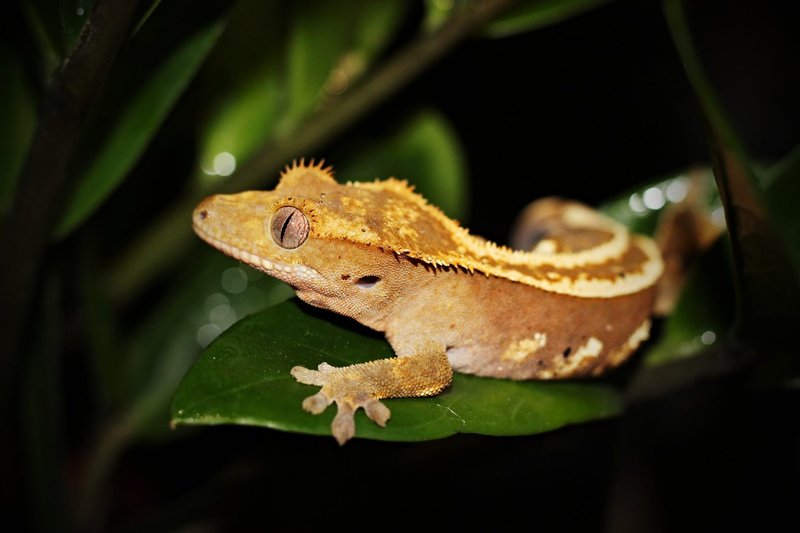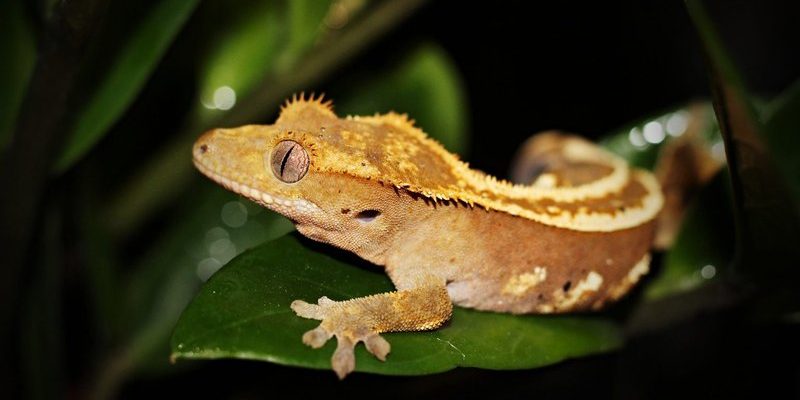
So, if you’re considering bringing a crested gecko into your home, or if you’re just curious about these fascinating creatures, let’s clear up some of those misunderstandings. We’ll dive deep into what’s true and what’s not, so you can make informed choices about your new scaly friend. Grab a cup of coffee, and let’s chat about what you really need to know!
Myth 1: Crested Geckos Are Nocturnal
Many people think that because crested geckos are often found active at night, they are fully nocturnal. Here’s the thing: while they do enjoy being active during nighttime hours, that doesn’t mean they sleep all day.
Crested geckos tend to be more crepuscular, which means they are most active during the dawn and dusk hours. This behavior has evolved as a survival tactic—helping them avoid daytime predators while still allowing them to hunt for food. So, if you take one home, don’t be surprised to see your little buddy getting up to some hijinks when the sun is just setting!
Why This Matters for Owners
Understanding their active hours helps owners create a suitable environment. You wouldn’t want to set up a basking light during the day when your gecko prefers to chill. Instead, focus on dim lighting during the day and allow for a warm area where they can lounge. This simple adjustment goes a long way in ensuring your crested gecko feels at home.
Myth 2: They Can Live on Just Insects
When you think of reptiles, you might picture them munching on bugs. While crested geckos do enjoy insects, they’re not strictly insectivores. In fact, they thrive on a varied diet that includes fruits and commercial crested gecko diets that provide essential nutrients.
A common misconception is that feeding them just crickets or mealworms will suffice. This can lead to nutritional deficiencies. You might be wondering what to feed them instead. A balanced diet should include:
- Commercial crested gecko food (often powdered to be mixed with water)
- Fruits like mango, papaya, or mashed bananas
- Occasional insects for protein
Feeding Tips
Mixing their diet keeps them happy and thriving. You can easily rotate between different fruits and commercial diets to keep things interesting. Just make sure you research safe fruits for your lizard buddies to munch on!
Myth 3: Crested Geckos Don’t Need UV Light
You might have heard that crested geckos can thrive without UV lighting. While it’s true they don’t need as much UV exposure as some other reptiles, they can benefit from it. Here’s the deal: UV light helps reptiles synthesize vitamin D3, which is essential for calcium absorption.
In indoor environments, you’re often controlling the lights and temperature, which can be less than ideal for your gecko’s health. Providing a low-level UVB light can enhance their well-being, helping to prevent metabolic bone disease and other health issues related to calcium deficiency.
Setting Up Their Habitat
Consider setting up a simple lighting schedule. A low-level UVB bulb can be on during the day for about 10-12 hours, mimicking natural sunlight. Make sure to provide plenty of hiding spots and vertical space in their enclosure to keep them comfortable.
Myth 4: They’re Easy to Care For and Don’t Need Handling
Another misconception is that because crested geckos are low-maintenance, they don’t require much interaction. While it’s true they’re relatively easy to care for compared to some reptiles, they still benefit from gentle handling.
Being held can help socialize your gecko, making it easier for you to bond. Just be careful to take it slow in the beginning. Let them get used to your presence before you scoop them up. Start with short handling sessions, and always support their body to make them feel secure.
Creating a Trusting Relationship
Building trust takes time. Always handle your gecko gently, and avoid quick movements that might scare them. Over time, your crested gecko will learn that you mean no harm, and handling can even become a part of your daily routine.
Myth 5: Crested Geckos Change Color Like Chameleons
It’s easy to confuse crested geckos with chameleons when it comes to color changes. However, crested geckos don’t change color to blend in with their surroundings. They do have some ability to darken or lighten their skin to express mood or temperature changes, but it’s not as dramatic as what chameleons do.
For instance, they may lighten up if they’re feeling stressed or darken when they’re basking. This behavior is more about survival than camouflage. It’s good to know what your gecko’s color changes may indicate, as it can give you clues about their comfort level.
Identifying Stress Signs
If you notice your crested gecko becoming darker unexpectedly, it might be experiencing stress. This could stem from factors like improper temperature, inadequate hiding spots, or even handling that’s too frequent. Keeping an eye on their behavior will help keep them happy.
Myth 6: Crested Geckos Are Not Good Pets for Kids
Some people believe that crested geckos are too fragile to be good pets for kids. While it’s true they need gentle handling, they can actually make great pets for responsible children. Teaching kids about proper care and handling can be a wonderful way to bond and cultivate responsibility.
Crested geckos are typically calm and less likely to bite than other reptiles. If you encourage children to wash their hands after handling, they can have a safe and enjoyable experience.
Setting Boundaries and Guidelines
Make sure to establish clear guidelines for handling, like only holding them during playtime and ensuring they stay in a safe environment. This can help prevent accidents and teach valuable lessons about caring for pets.
Wrapping Up the Myths and Facts
So there you have it! The world of the crested gecko is full of intriguing facts, but myths can muddy the waters. Understanding their needs—including their dietary preferences, activity patterns, and habitat requirements—can help you be an informed and responsible owner.
Remember, bringing a crested gecko into your home is a commitment that goes beyond just feeding them. It involves learning about their behavior, providing the right environment, and keeping them healthy and happy. With the right knowledge and care, you’ll find that these little lizards can be truly delightful companions.
Now that you know the facts, are you ready to embrace the adventure of owning a crested gecko?

